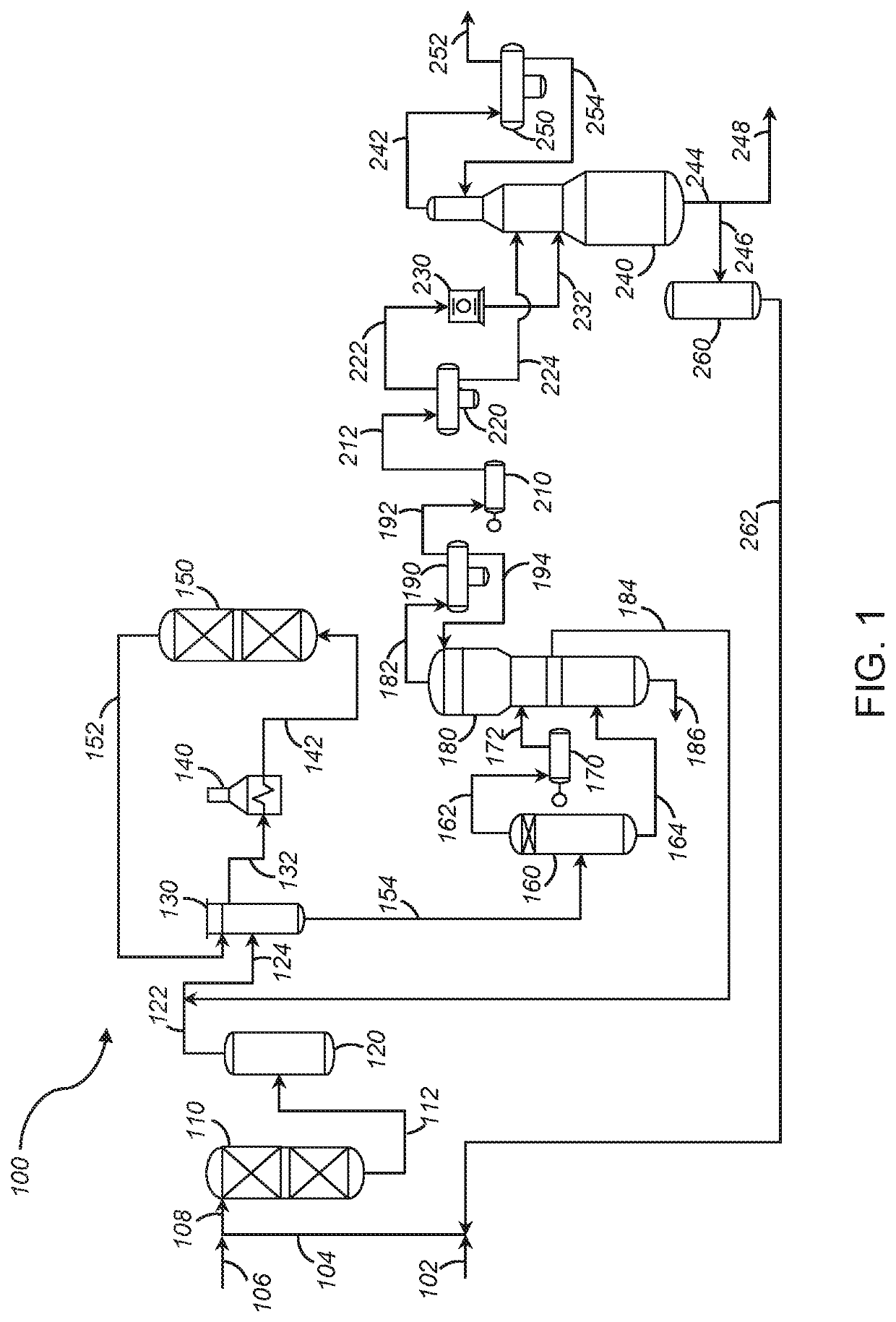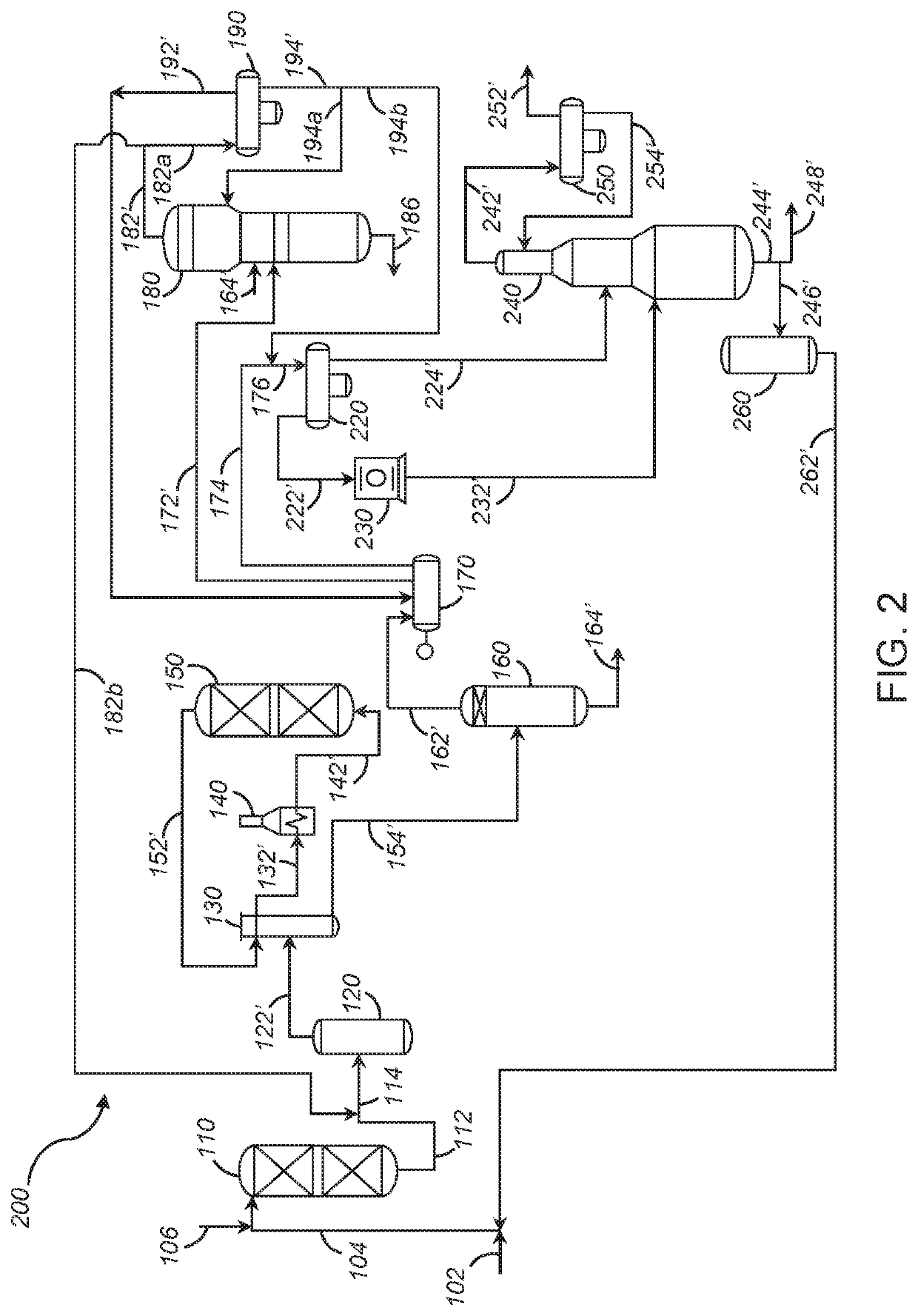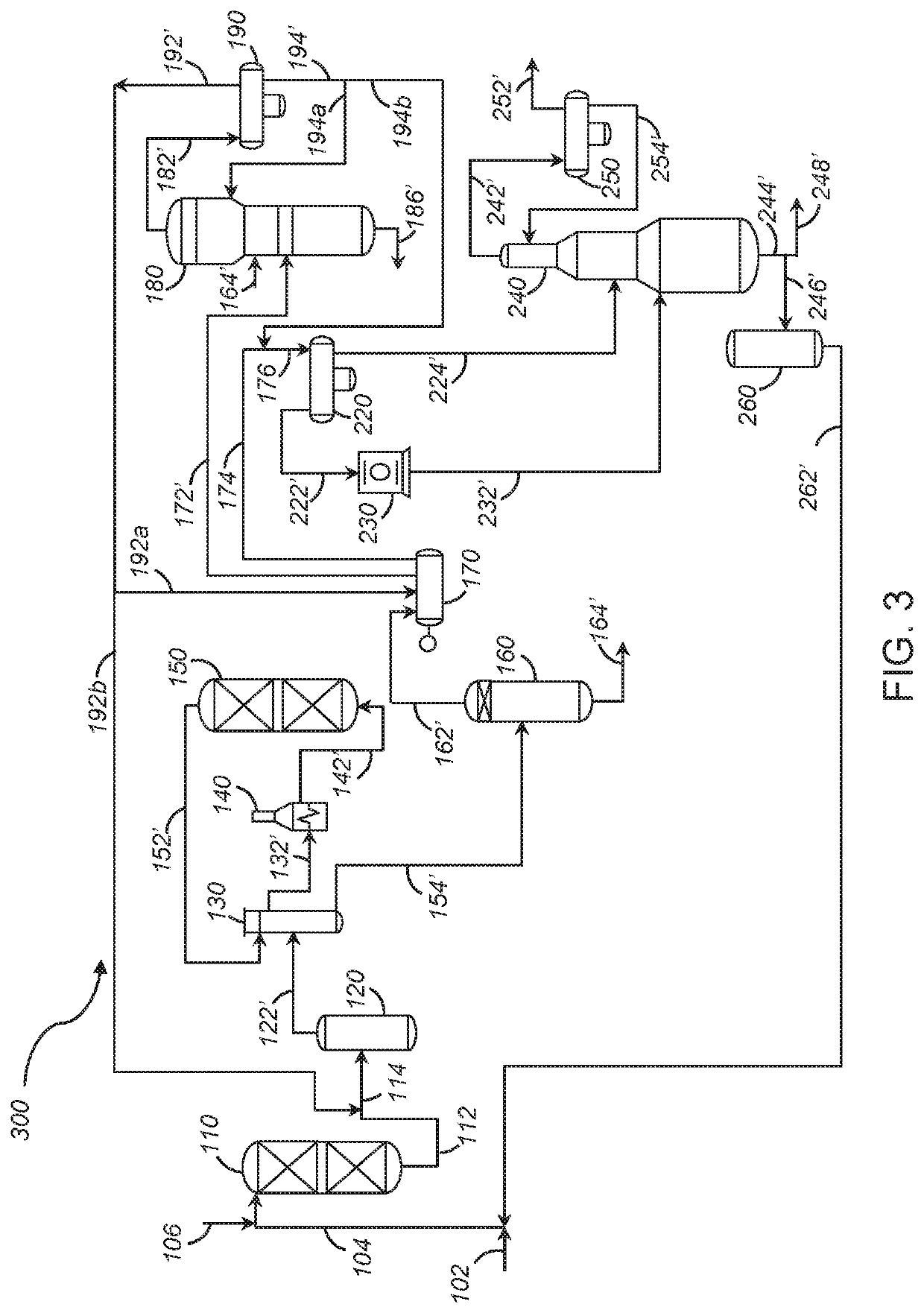Process for cracking an olefinic feed comprising diolefins and monoolefins
- Summary
- Abstract
- Description
- Claims
- Application Information
AI Technical Summary
Benefits of technology
Problems solved by technology
Method used
Image
Examples
embodiments
[0061]While the following is described in conjunction with specific embodiments, it will be understood that this description is intended to illustrate and not limit the scope of the preceding description and the appended claims.
[0062]A first embodiment of the invention is a process for cracking an olefinic feed comprising diolefins and monoolefins, the process comprising selectively hydrogenating the olefinic feed in a hydrogenation reactor to convert diolefins to monoolefins and provide a hydrogenated effluent stream; vaporizing the hydrogenated effluent stream in a vaporizer to provide a vaporized hydrogenated effluent stream; passing the vaporized hydrogenated effluent stream to an olefin cracking reactor to provide a cracked olefin stream comprising C2 and C3 olefins; passing the cracked olefin stream to a recycle column to provide one of an overhead vapor stream comprising C5− hydrocarbons or a side draw vapor stream comprising C6+ hydrocarbons; and recycling at least a portion...
PUM
 Login to View More
Login to View More Abstract
Description
Claims
Application Information
 Login to View More
Login to View More - R&D
- Intellectual Property
- Life Sciences
- Materials
- Tech Scout
- Unparalleled Data Quality
- Higher Quality Content
- 60% Fewer Hallucinations
Browse by: Latest US Patents, China's latest patents, Technical Efficacy Thesaurus, Application Domain, Technology Topic, Popular Technical Reports.
© 2025 PatSnap. All rights reserved.Legal|Privacy policy|Modern Slavery Act Transparency Statement|Sitemap|About US| Contact US: help@patsnap.com



